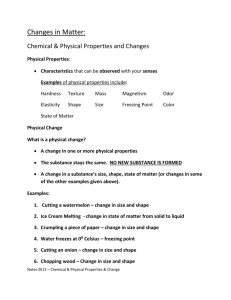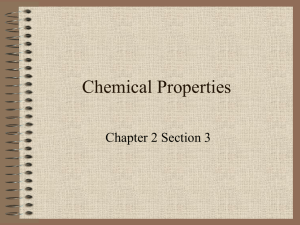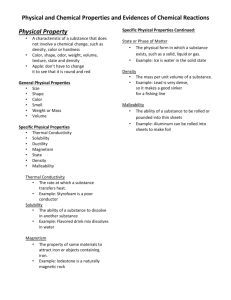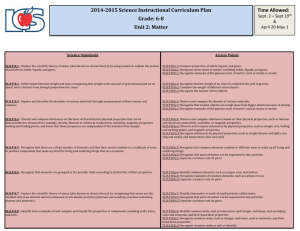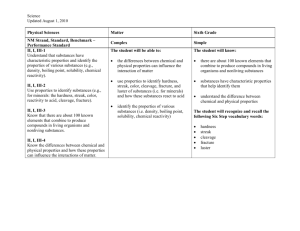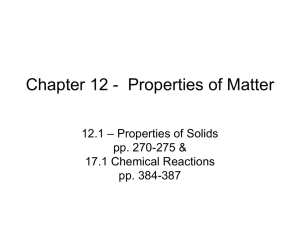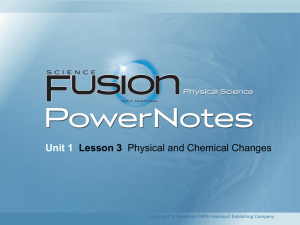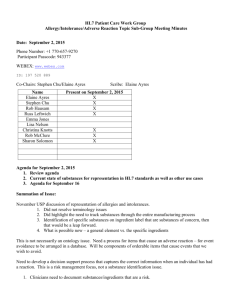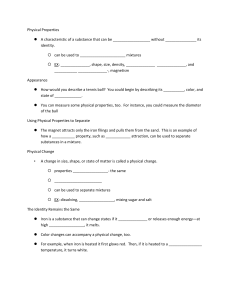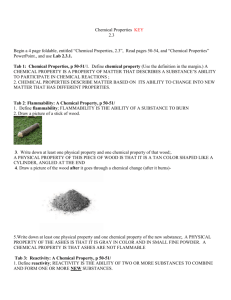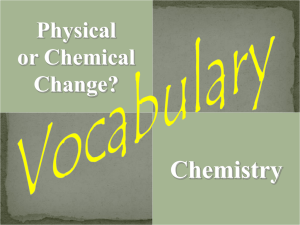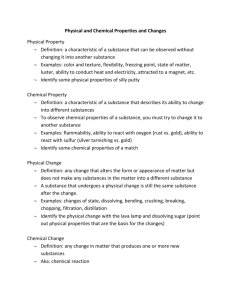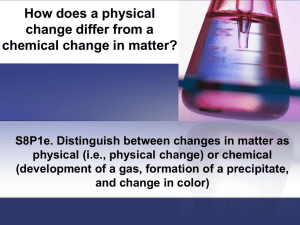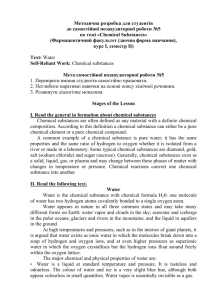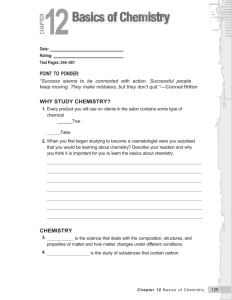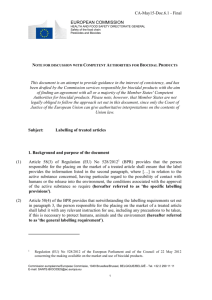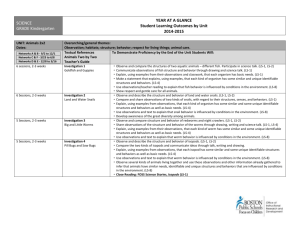Chemical Properties
advertisement
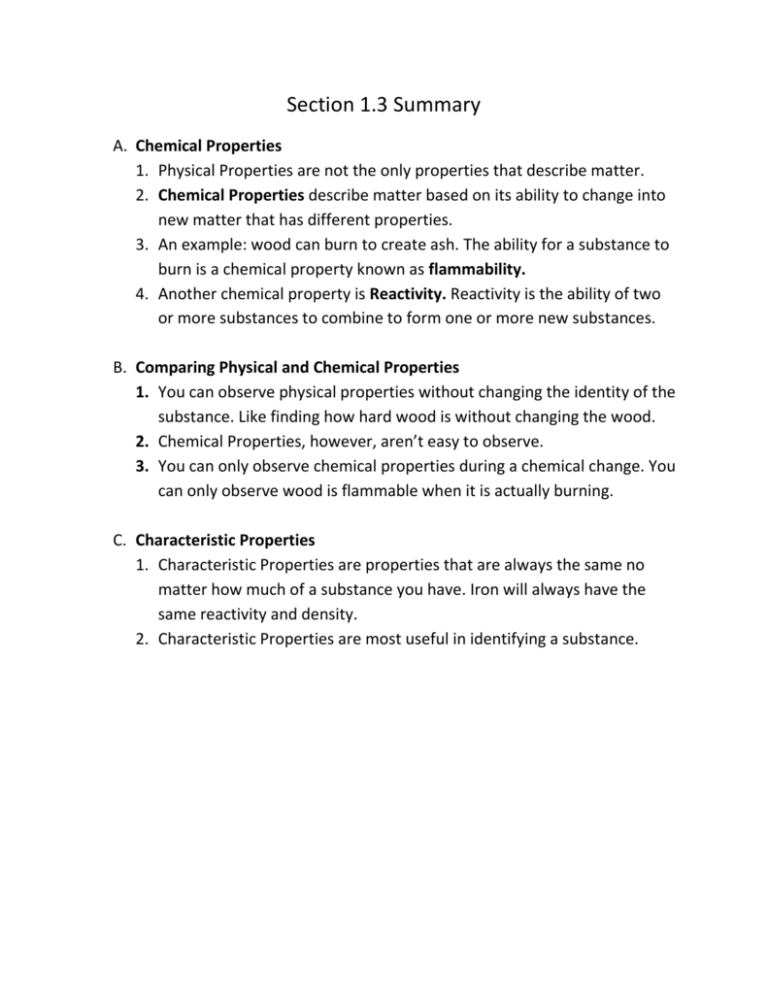
Section 1.3 Summary A. Chemical Properties 1. Physical Properties are not the only properties that describe matter. 2. Chemical Properties describe matter based on its ability to change into new matter that has different properties. 3. An example: wood can burn to create ash. The ability for a substance to burn is a chemical property known as flammability. 4. Another chemical property is Reactivity. Reactivity is the ability of two or more substances to combine to form one or more new substances. B. Comparing Physical and Chemical Properties 1. You can observe physical properties without changing the identity of the substance. Like finding how hard wood is without changing the wood. 2. Chemical Properties, however, aren’t easy to observe. 3. You can only observe chemical properties during a chemical change. You can only observe wood is flammable when it is actually burning. C. Characteristic Properties 1. Characteristic Properties are properties that are always the same no matter how much of a substance you have. Iron will always have the same reactivity and density. 2. Characteristic Properties are most useful in identifying a substance. D. Chemical Changes and New Substances 1. A chemical change happens when one or more substances are changed into new substances that have new and different properties. 2. Chemical changes and chemical properties are not the same. 3. Chemical properties of a substance describe which chemical changes will occur and will not occur. Chemical changes are the actual change to a new substance. 4. Examples of chemical changes: Food digesting in your stomach Hot gas formed when hydrogen and oxygen join to make water. Soured Milk Anti-acid tablets dissolving in water Statue of Liberty oxidizing from its original copper color to its current green color. E. What Happens During a Chemical Change? 1. When baking a cake, the eggs, milk, flour, sugar and other ingredients are mixed together. 2. When you bake the batter, a chemical change creates a cake that has different properties than the ingredients. 3. You also cannot separate the ingredients out of the cake once it is created. F. Signs of Chemical Changes 1. When a chemical change takes place, one or more of the following signs are present: Change in color or smell Production of heat Fizzing and foaming Sound and light being given off 2. All chemical changes create new substances. G. Matter and Chemical Changes 1. Chemical changes change the identity of matter involved 2. Chemical changes are very difficult, or impossible, to reverse. H. Physical Versus Chemical Changes 1. During a chemical change, the composition of the substance changes. The composition does not change during a physical change. 2. Composition is the type of matter that makes up the object and the way the matter is arranged in the object. I. A Change in Composition 1. Physical changes do not change the composition of a substance 2. Example: Water is 2 Hydrogen and 1 oxygen atom; whether it is solid liquid or gas, it is still the same arrangement of elements. 3. Chemical changes do alter the substance’s composition. A chemical change of water can split the elements into separate hydrogen and oxygen gases.
